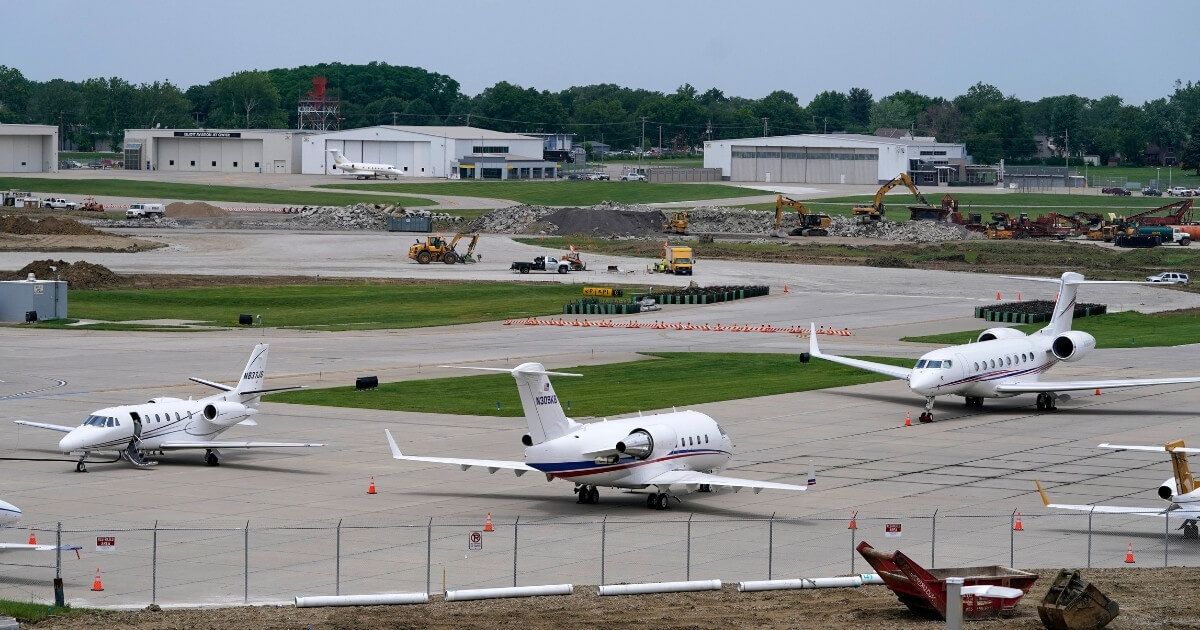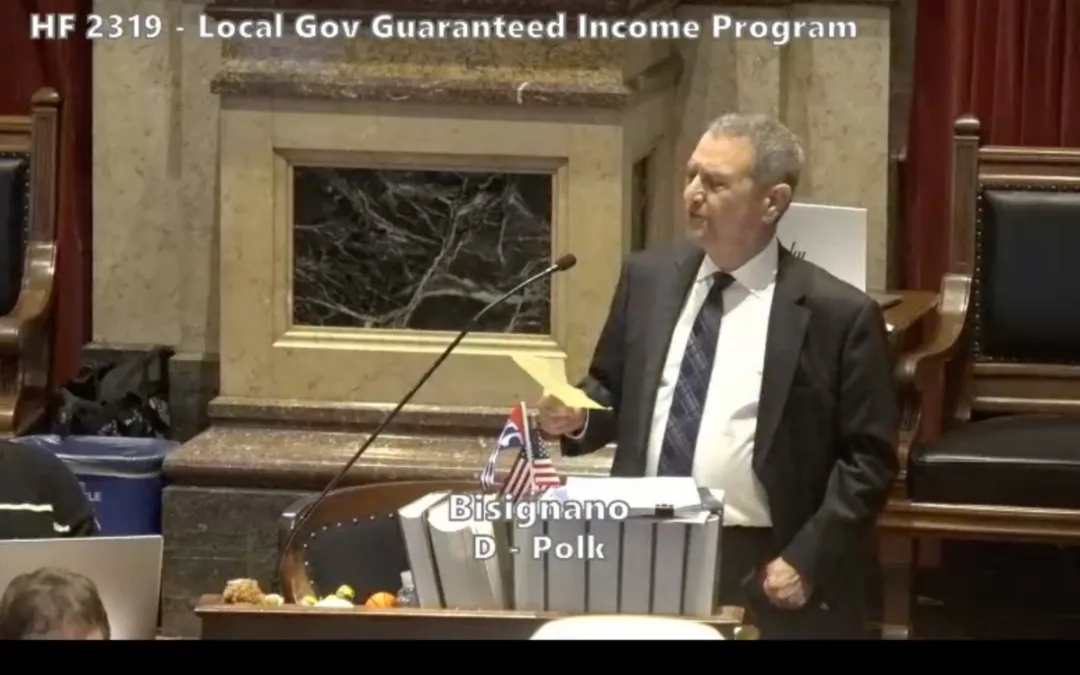
During the same period that Iowa's small-commericial airports have seen services shrink, the Des Moines International Airport has been adding flights. (AP Photo/Charlie Neibergall)
What’s happening with airports across the country as airlines deal with staffing shortages, capacity constraints, and delayed and canceled flights is nothing new to Iowa’s smaller-commercial airports. In a three-part series, Twitter user @AirspaceIowa will explain what’s been hindering Iowa’s smaller airports and what it means for their future.
Read Part One: https://iowastartingline.com/2022/06/29/iowa-small-market-airline-service-continues-decline-part-one/
Part 2: Competition, supply and demand
Airline service to small markets peaked around the late 1980s and has been declining ever since.
For instance, according to archives from the Official Airline Guide, in 1989 Sioux City had non-stop or one-stop/same-plane service (also known as a “direct” flight) from America West Airlines to Phoenix, Northwest Airlines to Minneapolis, TWA to St. Louis, and United Airlines to Denver.
And while the Sioux City example was something of an outlier, at the time much smaller Iowa markets such as Burlington, Fort Dodge, and Spencer had airline service to one and sometimes two or three destinations. Today, Sioux City is barely hanging on to two government-subsidized daily flights.

*1 Large and medium-sized airports that serve Iowans have grown by a combined 1.7 million passengers annually since 2002; small markets have lost a combined 17,000 annual passengers over the same time frame.
The small-market service peak occurred about a decade after President Jimmy Carter signed into law the Airline Deregulation Act (ADA) of 1978. It was a bold attempt to deregulate a significant slice of interstate commerce, and its advocates promised increased and expanded service thanks to higher competition.
[inline-ad id=”1″]
Before the ADA, airline service in the United States was regulated by the Civil Aeronautics Board (CAB), which gave explicit permission for specific airlines to serve specific city pairs. To sell a scheduled passenger flight between, say, Sioux City and St. Louis, an airline would file with the CAB for permission to serve the route. If the CAB approved, that airline would be obligated to provide a specific frequency and schedule. No other airline could provide the same service unless the CAB decided the market was underserved and allowed new entrants. The CAB also set fares and would ensure airline profitability if a route was losing money.
In the short term, increased competition spurred by deregulation was a boon for airline service everywhere. After the ADA became law, airline demand for new routes opened up fiercely. The next decade was a bloodbath for airlines as new entrants such as People Express boomed and busted, and legacy airlines Braniff, Eastern, and Pan Am all folded (with many more legacy airlines to follow over the next two decades).
Since the early ’90s, small, rural communities have continued to see significant airline service reductions while faster-growing cities have gained. In Iowa, the communities of Clinton, Ottumwa, and Spencer lost airline service altogether.

Airport capacity growth (upper graph) reflects increases to airline passenger service, as measured by “available seat miles” (the number of available passenger seats times the number of miles flown to and from a specific airport) since 2002 is up across all market sizes through 2019, but significantly higher for mid and large-size airports. Concurrently, average load factor (lower graph) (the % of available capacity passengers are paying to use) has risen significantly since2002 for mid and large markets, while hovering around 50% for small.
On the flip side, Des Moines and Cedar Rapids airports have seen significant service increases, driven both by population and business demand but also from increased competition thanks to ultra-low-cost carriers (ULCC) such as Allegiant and Frontier.
ULCC airlines typically provide multiple nonstop flights per week (but not daily) in mid-size markets to high-density leisure destinations, as opposed to major airlines and their regional partners which connect markets of all sizes to each other through daily flights via the hub and spoke model.
*1: – “Large” market airports include airports with 750,000 passengers a year or more (Des Moines and Omaha) – “Medium” market airports include airports with more than 100,000-750,000 passengers a year (Cedar Rapids and Quad City Airport) – “Small” market airports include airports with less than 100,000 passengers per year (Burlington, Dubuque, Fort Dodge, Mason City, and Sioux City)
Part three will focus on the practical impacts to Iowans as small-commercial airports decline and what it means for the future.
by @AirspaceIowa
06/30/22
[inline-ad id=”0″]
Iowa Starting Line is part of an independent news network and focuses on how state and national decisions impact Iowans’ daily lives. We rely on your financial support to keep our stories free for all to read. You can contribute to us here. Also follow us on Facebook and Twitter.
Politics

Biden marks Earth Day by announcing $7 billion in solar grants
The Biden administration on Monday announced the recipients of its Solar For All Program, a $7 billion climate program that aims to lower energy...

6 terrifying things that could happen if the Comstock Act is used to target abortion
Does 1873 sound like a really, really long time ago? Well, that’s because it is—but if Republicans and far-right anti-abortion activists have their...
Local News

No more Kum & Go? New owner Maverik of Utah retiring famous brand
Will Kum & Go have come and gone by next year? One new report claims that's the plan by the store's new owners. The Iowa-based convenience store...

Here’s a recap of the biggest headlines Iowa celebs made In 2023
For these famous Iowans, 2023 was a year of controversy, career highlights, and full-circle moments. Here’s how 2023 went for the following Iowans:...





